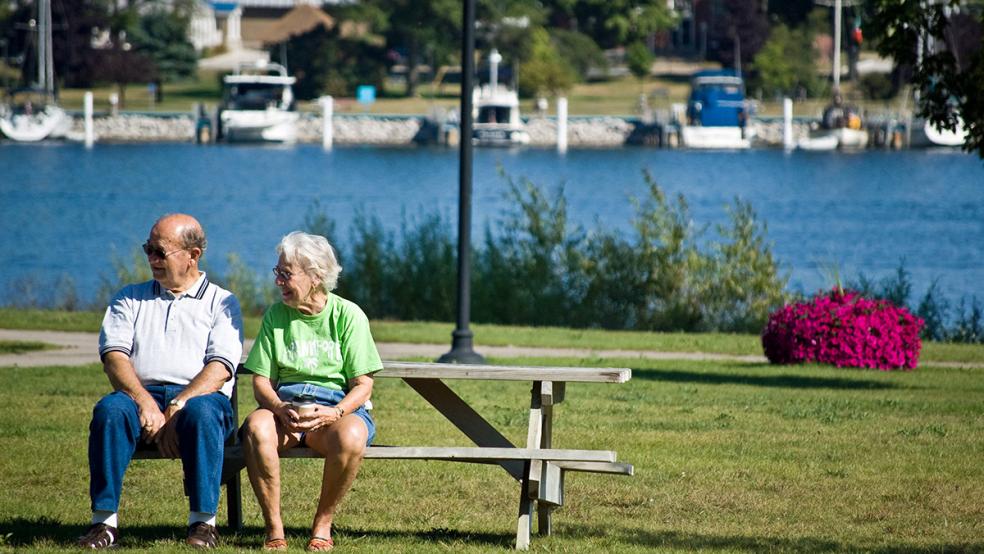While American health care reform in Washington continues to be held hostage by partisan politics, leaders elsewhere are making real progress on one of the seminal health issues of our time – the aging population.
This contrast played out this week on two sides of the American continent. In Washington, Congress showed how entrenched it has become, while in San Francisco, the World Congress of the International Association of Gerontology and Geriatrics (IAGG) showcased how aging is unlocking transformative innovations in health care.
Related: How Amazon Could Dominate 3 Megatrends of the 21st Century
So while Charles Krauthammer’s pithy analysis -- “Nobody has any idea what to do about health care” -- might be true if you’re inside the Beltway, it’s less true if you know where to look.
To wit: IAGG convened over 6,000 experts in geriatrics, gerontology, medicine, health care and economics. This year also featured Fortune 100 companies from industries as diverse as technology, home care, financial services and pharmaceuticals. Each of these private-sector leaders came to IAGG because they realize the competitive need to engage on the theme of global aging. In the process, they are showing how their marketplace innovations will become the drivers of healthier aging in the 21st century, even as the politics of health care fails us.
Here are some key highlights that emerged from the IAGG meeting about the “silver economy” – valued at roughly $15 trillion – that serves the 1 billion of us over age 55 on the planet.
Technology Creates a New Standard of Care
Care is increasingly moving from centralized 20th century facilities to where the need is, including our homes and other remote locations. In San Francisco, we saw the market-driven technology innovation of Remote Patient Monitoring (RPM) that improves the quality of our lives, often through earlier detection and diagnosis leading to prevention and wellness only dreamed about on Capitol Hill. RPM is rapidly becoming the standard of care in our 21st century because of its value to improved health outcomes as it delivers cost savings the politicians in DC, London, Tokyo or Beijing want.
Top Reads: The Best and Worst States for Taxes in 2017
At IAGG we learned that this application of innovative new technologies can contribute as much as a 40% drop in hospital admissions and up to a 75% decrease in readmissions – both huge drivers of health care spending. These savings are accompanied by better quality of life -- reduced falls, better control of diabetes and better management of noncommunicable diseases, including targeted ones like congestive heart failure.
Financial Institutions Are Learning Health Care
Bankers were also in evidence at IAGG, with Bank of America Merrill Lynch reporting important survey research in aging today, including people’s concerns and goals for their retirement. Retirees and pre-retirees’ top priority is health, while their top fear is the great scourge of the 21st century, Alzheimer’s. Health is becoming one of the critical factors in financial training, and thousands of advisors are learning how to engage with older consumers and to recognize warning signs like difficulty managing finances and evidence of financial abuse. This partnership is a key competitive advantage for Bank of America, and an example of the kind of non-traditional collaboration that we need to address the burden of Alzheimer’s and other diseases of aging, where markets are driving innovation that politics miss.
Home Care Is the Preferred Care Model for the 21st Century
For over 20 years, Omaha-based Home Instead Senior Care has been leading the revolution transforming elder care and enabling the critical aging-in-place trend. Quality Home Care helps seniors achieve one of their chief goals while generating enormous economic value: $13.4 billion in total savings to the health care system and one of the fastest growing job sectors in the U.S. economy, yielding tangible benefits that ultimately accrue to businesses and employees.
We also learned of home care’s vital function in decreasing the burden on family caregivers, most notably adult daughters, itself representing a silent social crisis and drain on employee productivity. The numbers here should be a wakeup call: The average U.S. caregiver is a 49-year old woman. As many as 61% have seen a negative impact on their work life, such as showing up late or leaving early, being more distracted at work, passing up deserved promotions, or leaving the full-time workforce altogether. Professional Home Care is helping to address this disproportionate impact, re-shaping the care model globally.
Pharma Innovation Focused on Wellness and Prevention
Abundantly evident at IAGG, one also saw that adult vaccines are another area of huge potential for our health and savings across the health care system. Every year, more than 40,000 U.S. adults are hospitalized due to vaccine-preventable diseases, and treatment of these diseases costs the U.S. alone over $26 billion each year, which doesn’t even include the additional costs that cascade from lost productivity. Innovators like Pfizer shed important light on how we need to step up to a global effort behind adult vaccinations, much like we had in mid-20th century for childhood vaccinations. Not only would adult vaccines reduce costs, they would also help older adults to maintain their functional ability – staying healthy, active and independent for longer.
Instead of doubling down on a never-ending health care debate, Congress and the White House might take note of existing fixes already in the marketplace and spend some time ensuring public policy reforms that create the hospitable conditions for even more innovation. A wake-up call, indeed!






